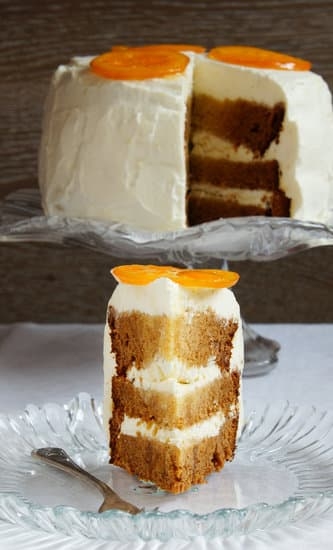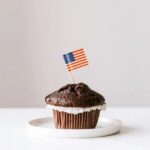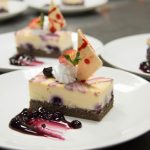Cake decorating is a delightful and creative way to add a personal touch to your baked creations. Whether you are a beginner or a seasoned baker, knowing the right tips and techniques can make all the difference in achieving professional-looking results. In this article, we will explore essential tools, piping tips, techniques, working with fondant, using edible decorations, troubleshooting common mistakes, and tailoring designs for various occasions.
When it comes to cake decorating, having the right tools at your disposal is crucial. From offset spatulas to piping bags and tips, each item plays a significant role in transforming a simple cake into a work of art. Understanding the function of each tool and how to use them effectively can make the decorating process much smoother and more enjoyable.
One of the key elements in cake decorating is selecting the right piping tip for your design. With countless options available in different shapes and sizes, choosing the perfect tip can be overwhelming. However, by considering factors such as the desired outcome, texture of frosting or icing used, and level of intricacy required, you can confidently select the ideal piping tip to bring your vision to life.
Essential Tools for Cake Decorating
When it comes to cake decorating, having the right tools is essential to creating beautiful and professional-looking cakes. Whether you are a beginner or an experienced baker, having the right equipment can make a significant difference in the outcome of your creations. Here is a detailed list of must-have items for cake decorating:
- Pastry Bags: These are essential for piping frosting and creating intricate designs on your cakes.
- Piping Tips: Invest in a variety of different shapes and sizes to create different textures and patterns on your cakes.
- Offset Spatula: This tool is perfect for spreading icing smoothly and evenly on your cakes.
- Bench Scraper: A bench scraper is useful for smoothing out the sides of your cakes and achieving clean edges.
Having these basic tools in your cake decorating arsenal will help you execute various techniques with ease.
In addition to the basics, there are other important tools that can elevate your cake decorating game even further. Consider investing in:
- Fondant Smoother: For achieving a flawless finish when working with fondant.
- Decorating Comb: To create textured designs on the sides of your cake.
- Edible Markers: Perfect for adding intricate details or personalized messages to your cakes.
With these essential tools at hand, you will be well-equipped to take on any cake decorating project with confidence. Remember, having the right tools is half the battle won when it comes to creating stunning cakes that will impress everyone at the table.
Choosing the Right Piping Tips
When it comes to cake decorating, choosing the right piping tips can make a world of difference in the final result of your design. Piping tips come in various shapes and sizes, each serving a specific purpose in creating different decorations. Whether you’re aiming for intricate patterns, delicate details, or bold designs, selecting the perfect tip is essential for achieving your desired look.
Understanding Different Piping Tip Styles
Before you start decorating your cake, it’s important to understand the different styles of piping tips available. From round tips for creating outlines and letters to star tips for making rosettes and shells, each type has its own unique function. Additionally, there are specialty tips like leaf tips for creating foliage and petal tips for crafting flowers. Familiarizing yourself with these styles will help you choose the right tip for your specific design needs.
Matching Tips to Designs
When selecting a piping tip for your cake decoration, consider the overall look you want to achieve. If you’re looking to create intricate lace patterns or fine details, a small round tip may be more appropriate. For larger borders or fillings, a larger open star or closed star tip might be better suited. Experimenting with different tips on a practice surface before applying them to your cake can also help you determine which tip works best for your design.
Experimenting and Customizing
Don’t be afraid to experiment with various piping tips and techniques to discover new ways to enhance your cake decorating skills. Mix and match different tips to create unique textures and designs that reflect your personal style.
Customizing your decorations with a combination of piping tips can add depth and dimension to your cakes, making them stand out even more. Remember that practice makes perfect when it comes to using piping tips effectively, so don’t hesitate to try out new ideas and techniques until you find what works best for you.
Mastering Different Piping Techniques
Understanding the Basics of Piping
Before diving into more advanced techniques, it’s important to have a good grasp of the basics of piping. Start by practicing with different piping tips and icing consistencies to see how they affect the design. Experiment with pressure control and hand movements to create smooth lines and shapes. By mastering the fundamentals, you’ll be better equipped to tackle more complex designs later on.
Creating Beautiful Buttercream Flowers
Buttercream flowers are a classic decoration that can add a touch of elegance to any cake. To create realistic-looking flowers, start by choosing the right piping tip – a petal tip works well for creating petals while a leaf tip can be used for foliage. Practice making different types of flowers like roses, daisies, and tulips until you feel confident in your abilities. Remember to vary the pressure on the piping bag to achieve dimension in your floral designs.
Exploring Intricate Designs
For those looking to try their hand at more intricate designs, there are endless possibilities when it comes to piping techniques. From lace patterns and lattice work to scroll designs and writing messages, intricate piping can take your cakes from ordinary to extraordinary. Experiment with different tips and practice on parchment paper before moving on to your actual cake. With patience and practice, you’ll soon be able to create stunning works of edible art using advanced piping techniques.
Tips for Working With Fondant
Fondant is a versatile and popular cake decorating medium that allows for creating smooth and professional-looking finishes. However, working with fondant can be tricky, especially for beginners. Here are some tips to help you achieve a flawless fondant finish on your cakes:
- Rolling Out Fondant: To prevent sticking, knead the fondant before rolling it out on a clean surface dusted with powdered sugar or cornstarch. Use a rolling pin to evenly roll out the fondant to your desired thickness.
- Applying Fondant to the Cake: Carefully lift the rolled-out fondant using a rolling pin and drape it over the cake. Smooth out any air bubbles or wrinkles by gently pressing the fondant against the cake starting from the top and moving downwards.
- Trimming Excess Fondant: Use a sharp knife or pizza cutter to trim off any excess fondant around the base of the cake. Make sure to leave a small border for neat edges.
Working with fondant requires patience and practice, so don’t get discouraged if your first attempts are not perfect. With time and experience, you will improve your fondant skills and be able to create professional-looking cakes that will impress your friends and family.
Whether you’re making a birthday cake, wedding cake, or special occasion cake, using fondant can take your creations to the next level. Experiment with different colors, textures, and designs to unleash your creativity and elevate your cake decorating skills. Remember to have fun and enjoy the process of creating delicious works of art that will be enjoyed by all who indulge in them.
Decorating With Edible Decorations
Decorating cakes with edible decorations is a fun and creative way to take your baked creations to the next level. Whether you are preparing a birthday cake, wedding cake, or just want to add a special touch to a regular dessert, using sprinkles, edible pearls, and other decorations can make your cake stand out. But knowing how to effectively incorporate these elements into your design can be the difference between a beautifully decorated cake and a cluttered mess.
When it comes to using edible decorations, one of the key tips is to choose items that complement the overall theme or color scheme of your cake. For example, if you are making a princess-themed birthday cake, you may opt for pink sprinkles and silver edible pearls to enhance the royal feel.
Additionally, consider the texture and size of the decorations – while sprinkles work well for adding subtle pops of color, larger toppings like chocolate shards or edible flowers can create more dramatic effects.
Another important tip is to strategically place your edible decorations to ensure they enhance the visual appeal of your cake. Scatter sprinkles in a rainbow pattern or create delicate patterns with edible pearls to add depth and dimension to your design.
Don’t be afraid to mix and match different types of decorations for a unique look – combining sprinkles with metallic dragees or sugar flowers can result in a visually striking presentation. Remember that practicing different placement techniques will help you refine your skills and develop your own decorating style over time.
Troubleshooting Common Cake Decorating Mistakes
Cake decorating, while enjoyable and rewarding, can sometimes come with its fair share of challenges and mishaps. Whether you are a seasoned baker or just starting out, encountering issues during the cake decorating process is not uncommon. However, knowing how to troubleshoot common cake decorating mistakes can make all the difference in salvaging your masterpiece.
One of the most common mishaps in cake decorating is air bubbles forming in your icing or fondant. These unsightly pockets can ruin the smooth finish of your cake design. To fix this issue, try using a small needle or pin to gently prick the bubble and then use a fondant smoother to press out the air. Smooth the area with a small amount of additional icing or fondant for a flawless look.
Another frequent problem that decorators face is buttercream that is too warm or soft, causing it to melt and lose its shape when piped onto the cake. To prevent this issue, try chilling your buttercream briefly before piping it onto the cake. Additionally, using stiffer consistency buttercream for intricate designs or working in a cooler environment can help maintain the shape of your decorations.
When working with fondant, one common mistake is getting wrinkles or creases on the surface of your cake. To avoid this problem, make sure to roll out your fondant evenly and smoothly without any tears or folds before draping it over your cake. Use a fondant smoother to gently press out any imperfections and work from top to bottom to create a seamless finish.
| Common Cake Decorating Mistakes | Troubleshooting Tips |
|---|---|
| Air bubbles in icing/fondant | Use a needle to prick bubble and smooth out with fondant smoother. |
| Soft buttercream melting when piped | Chill buttercream before piping and work in cooler environment. |
| Wrinkles/creases in fondant | Roll out fondant evenly, smooth out any imperfections with fondant smoother. |
Cake Decorating for Every Occasion
Cake decorating is a versatile skill that can be adapted to suit any occasion, whether it’s a birthday celebration, wedding reception, or any other special event. When it comes to creating a cake design for a specific occasion, there are a few key tips to keep in mind.
First and foremost, consider the theme of the event and the preferences of the guest of honor. For a child’s birthday party, for example, bright colors and fun decorations may be more appropriate, while a wedding cake may call for more elegant and sophisticated designs.
One important tip to keep in mind when decorating cakes for different occasions is to plan ahead. Take into account the color scheme, overall aesthetic, and any specific details that need to be incorporated into the design. Whether you’re creating a tiered wedding cake or a simple sheet cake for a graduation party, having a clear plan in place will help ensure that your finished product meets your expectations.
In addition to planning ahead, another crucial tip for tailoring your cake designs to various occasions is to practice different techniques and stay updated on current trends in cake decorating. Experimenting with new piping tips, fondant designs, and edible decorations will not only help you expand your skills but also allow you to create unique and unforgettable cakes for any event.
By staying creative and open to trying new ideas, you can ensure that your cakes will always be a hit with guests and leave a lasting impression.
| Cake Decorating Tips | Occasion |
|---|---|
| Plan ahead | Birthday Parties |
| Stay updated on trends | Weddings |
| Experiment with new techniques | Special Events |
Conclusion
In conclusion, mastering the art of cake decorating requires not only the right tools and techniques but also a dash of creativity and passion. By following the essential tips outlined in this guide, you can elevate your cakes from ordinary to extraordinary. From choosing the perfect piping tip to working with fondant and edible decorations, each step plays a crucial role in creating stunning masterpieces that will wow your friends and family.
Remember, practice makes perfect when it comes to cake decorating. Don’t be discouraged by mistakes or mishaps along the way; instead, use them as learning opportunities to improve your skills. Whether you’re crafting buttercream flowers or intricate designs, embrace the process and enjoy every moment of bringing your creations to life.
So next time you’re ready to decorate a cake for a birthday, wedding, or any special occasion, don’t forget to refer back to these key tips for guidance. Let your imagination run wild and experiment with different techniques to truly make your cakes stand out. With dedication and a little bit of patience, you’ll soon be on your way to becoming a cake decorating pro.
Frequently Asked Questions
What Are the Best Tips for Cake Decorating?
The best tips for cake decorating involve using the right tools, starting with a smooth and level cake surface. It’s important to work with room temperature frosting, use a turntable for easy access, and practice different techniques like piping, smoothing, and adding decorations.
What Tip Do You Use for a Cake?
When it comes to decorating a cake, one of the most popular tips used is the closed star tip. This tip is versatile and can create beautiful swirls, rosettes, stars, or borders on cakes. Its design allows for more intricate designs while still being relatively easy to use.
What Is the Easiest Piping Tip for Beginners?
For beginners just starting with piping techniques, the easiest piping tip to use is the round tip. This tip is simple and straightforward, making it perfect for creating outlines, writing messages, or adding basic decorations to cakes. Its versatility makes it ideal for practicing different piping skills until you gain more confidence in your abilities.

Welcome to our cake decorating blog! My name is Destiny Flores, and I am the proud owner of a cake decorating business named Cake Karma. Our mission is to provide delicious, beautiful cakes for all occasions. We specialize in creating custom cakes that are tailored specifically to each customer’s individual needs and tastes.





